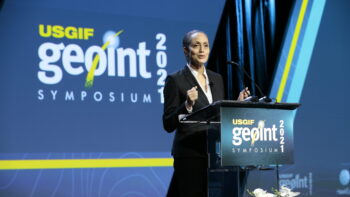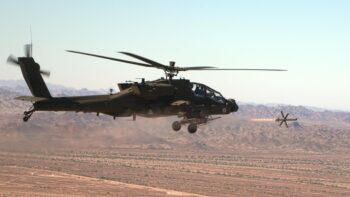
AFA ORLANDO: Air Force Chief of Staff David Goldfein leads perhaps the most ground-down service in the Pentagon. The Air Force has been at war since what I like to call the Third Balkan Wars, waged across Croatia, Montenegro, Serbia and Kosovo. Its pilots, maintainers and families are proud but tired and stretched thin. Its planes are incredibly old by modern standards, with an average age of around 27 years.
The service grapples with how to modernize its planes, grant its crews some reprieve from the stresses of flying or maintaining and supporting planes and satellites and still keep the United States the one true global power.
Goldfein is pressing the service to change the weapons it fights with, ensure we maintain military superiority over Russia and China and enlist, train and better support more airmen.
I interviewed the general here at the Air Force Association‘s annual winter conference. We’ve edited the questions and answers only for length and clarity.
Q: If JSTARS is so vulnerable that you cancelled the recap program, what about tankers, Rivet Joint and all the rest? Are you going to have to redesign all your force?
A: Maybe in the future. JSTARS for me is a bit of a pathfinder to look at new ways of doing business to directly align with the guidance we got in the National Defense Strategy. It says, look, we’re back in the business of peer competition and we’ve got to look at the high-end threat and how we continue to operate and increase lethality.
You may recall that our assessment of our ability to fly the current JSTARS pretty much ran out in 2017/2018. Boeing did a more in-depth assessment of the air frame and told us we could continue flying the current air frame til the mid-2020s.
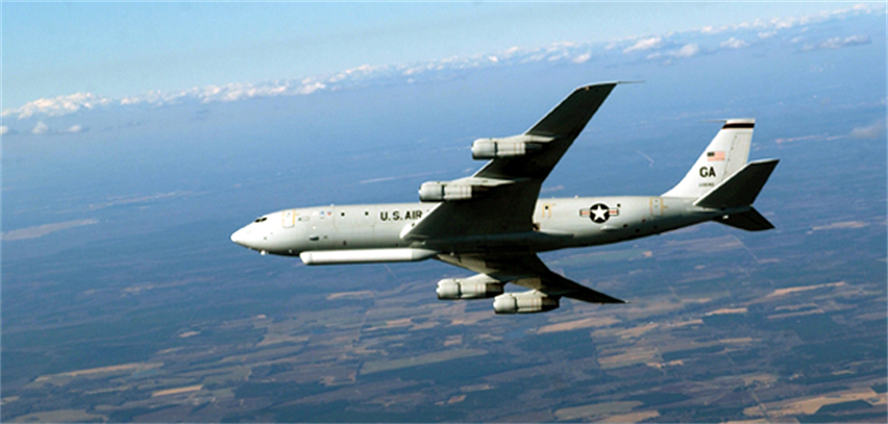
E-8C JSTARS
Q: Are you beginning to look at these other highly vulnerable aircraft?
A: We are always looking at every mission set to see how we can improve our performance in those missions we do for and as a member of the joint team. But our focus right now is that we have more platforms and sensors than we did in the past available to us. And we’ve really refined how we do fusion information.
Q: Has the (Multi Domain Command and Control) MDC2 study influenced this approach?
A: This particular dialogue is center of mass for the entire multi-domain command and control discussion. That’s why I look at this (JSTARS recap cancellation) as a pathfinder for the future.
Q: Do you expect reviews of these other systems in the next year?
A: Absolutely. You saw Gen. Wilson (the Vice-Chief of Staff) announced our deep dive look at electronic warfare.
Q: Is cyber going to be a part of that? (Note: The Air Force declared its intent last year to create an Enterprise Capability Collaboration Team (ECCT) on Electronic Warfare. Several senior Air Force generals — including Gen. Mike Holmes, the head of Air Combat Command — told me late last year the issue of including cyber in the study had not been decided.)
A: Absolutely. But the definition of how you use cyber is really important., Are you using that as a domain or as a set of capabilities within that domain? It’s both.
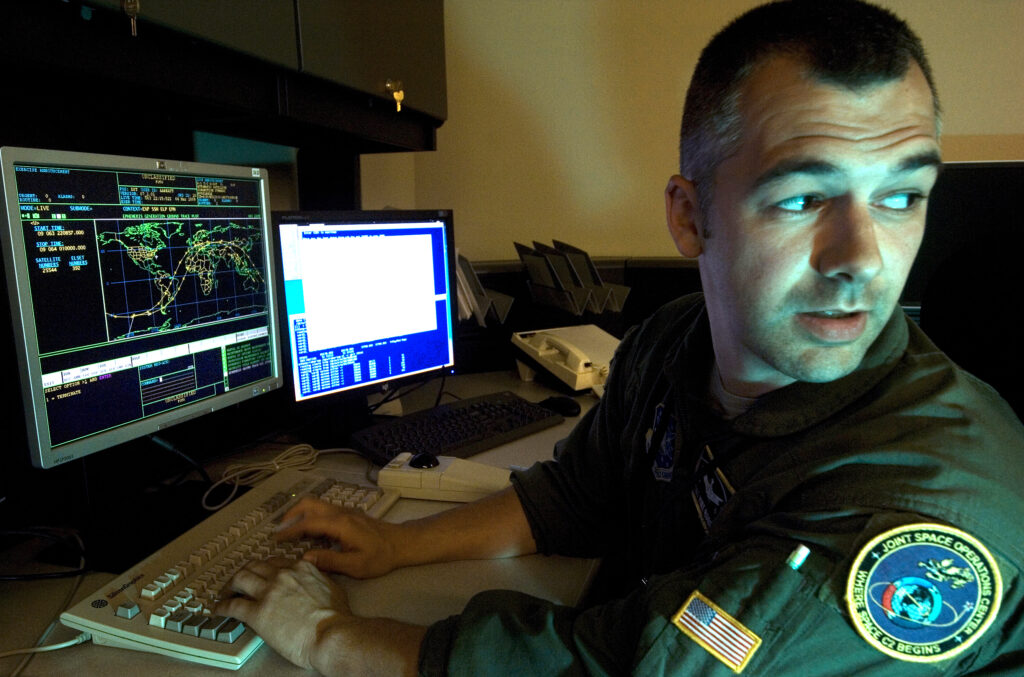
Joint Space Operations Center, Vandenberg Air Force Base, California
Q: The Space Corps. I don’t mean to pick at a scab, but I do. You guys seemed taken aback when Congress proposed the extent of the changes they were talking about. And they clearly signaled in the National Defense Authorization Act that both houses think change must come. What exactly are you going to do?
A: First thing I will tell you is there are worse things in the world as a chief of staff of a service than having Congress passionate about what I’m passionate about. As I look to the future — as Sec. Wilson and I look to the future — as the force responsible for approximately 80 percent of the architecture and the warriors that do the business of space superiority,’ we must be the thought leaders going forward to help us move in the business of space as a contested place and a warfighting domain.
One of the closest areas I think that offers a really good framework is to look at how the Navy performs sub-surface warfare. How we fight below the sea and how do we apply some of those tried and true principles to the way we fight above the atmosphere?
Q: At this early point what lessons have you gleaned and how can they apply to the Air Force?
A: As we look to normalize the business of space operations, we want to be sure that we don’t try to build structures and concepts of operations and architectures that are so new, unique and different that it results in slowing us down. Space and capabilities from space are already integrated into every military operation we perform. That’s why you heard Secretary Wilson and I focus on how we normalize — looking at the tried and true Tactics, Techniques and Procedures and architectures — and apply that to the space domain. Not unique, not different, but similar.
And then the second piece of this is, how we do ensure that we are optimized to further integrate space across all of the military operations that we do within the joint team but also acknowledge that there are other players in their game? There’s the Intelligence Community. international partners, there are commercial equities, We’ve got to pull all that together.
Q: You’ve got the National Space Defense Center (NSDC), you’ve got the MDC2 (Multi Domain Command and Control) work — I assume that’s driving a lot of your thinking. One of the things Salty (Brig. Gen. Chance “Salty” Saltzman) talked about is you will have to have a special cadre of people who, throughout their career will have to do command and control. I would think that kind of lesson, when comes to space, would apply there as well. Can you give us something concrete?
A: Command and control at the end of the day is commander business. What talent do I need to build that understands the business of multi-domain command and control that is then supporting to a supported commander. An example would be if I was responsible for personnel recovery or global mobility operations or prompt global strike and holding a target at risk for the commander in chief. In the old days I would look within my mission set and pull together those entities needed to perform that particular mission. The future as I see it is going to require us to be broader in our understanding of the key elements that all have to come together to be able to accomplish that mission with greater lethality and greater readiness.
Q: Doesn’t that mean reorganizations?
A: I don’t know yet. I don’t yet because I have been through too many exercises where we tried to solve problems through reorganization, and I’m going too be very disciplined as the chief that form must follow function. We start with CONOPS (Concepts of Operation) and then we apply the organization structure that is required.
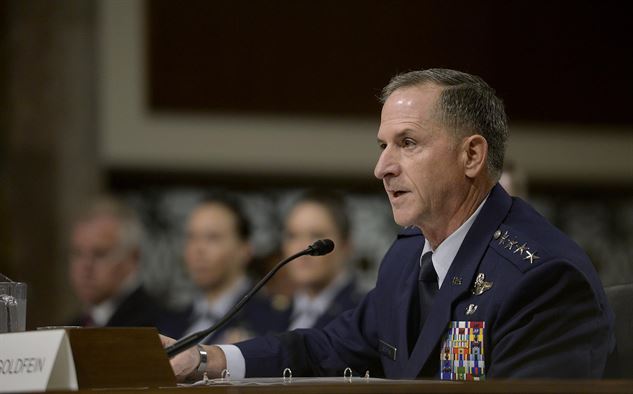
Gen. Goldfein testifies before the Senate Armed Services Committee
Q: It looks like you’ve got a pile of dough coming from Congress. The Army has made clear they’re going to put a lot of theirs on modernization. Sydney just broke that yesterday. They say that with OCO and the base budget, they’ve got they are starting to fix the readiness issue. Given the state of your fleets, are you in as good a position or are you going to take a lot of the money and keep putting it into readiness?
A: It’s always a balance. A chief and a secretary always have to make trades between capability capacity and readiness and the challenge is to the get balance right. all of one or all of another will end up resulting in our to balance.
We have a very clear, articulate National Defense Strategy that tells us to focus on building an Air Force that can deter, fight and win and that can do that against peer competitors. So you are going to see us invest in each of those areas — capability, modernization capacity size of the force and readiness.
Q: But you’ve got to pick to some degree, yeah? Which way is it going to be weighted in the next few months?
A: In the next few months I can tell that Secretary Wilson and I have been very clear about restoring readiness of the force. And there are four elements you must invest in to restore aviation readiness. The first is trained and ready people and thats beyond those who strap on the aircraft. That’s everyone whose fingers are on the plane; that includes maintainers, air traffic controllers, everybody.
Then you have to have a healthy weapon system you can employ. That’s all the maintenance, the depots, the parts the supplies everything. You’ve got to have a way and a place to train. thats the third element. The fourth element is finding time to train. So we are investing in ways to advance in all four of those areas within that budget.
Q: Is there one thing you would say, we’ve got to fix this now?
A: The secretary and I have been pretty clear that we think we’ve become too small a force for what the nation requires. So you’ll see a steady path we’re on to rebuild the size of the Air Force to perform our missions.
Q: So, more bodies?
A: Yes.
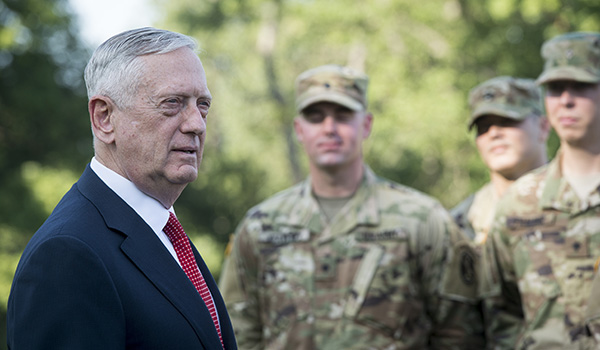
Defense Secretary Jim Mattis
Q: I was struck by the clarity of the defense strategy. How does it help you as the man who’s got to train and equip as you go forward. Can you give me something specific?
A: The inclusive way Secretary Mattis went about writing America’s National Defense Strategy — we all had a play and role in helping him write that document. So, as a chief, I feel personal ownership of the National Defense Strategy because I was allowed to contribute to it. that’s really helpful to me when I have to explain it to the force because I feel like I’m explaining my defense strategy.
Q: Was there something in particular you asked be put in?
A: As the lead air man we really helped craft the sections of the strategy that were specific to what the Air Force brings to the fight. So I just appreciate that the secretary did this in such an inclusive manner.
That’s not surprising. When I was his air component commander and he was CENTCOM commander, I remember him looking at me and saying: “Hey. My expectation of you, Goldfein, is vicious harmony.” So he drove vicious harmony in his crafting of the strategy.
Anduril debuts Pulsar AI-powered electronic warfare system
Company executives claimed the Pulsar system can use AI tools to quickly identify new threats and devise defenses against them, compressing the timeline for responding to rapidly-evolving electronic warfare.


















